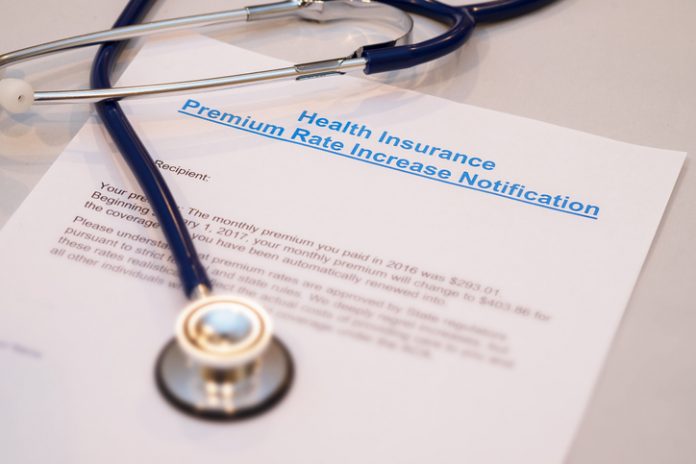By Brian Blase
The goal of achieving universal health coverage can only be achieved if both health care and health coverage are affordable—and for too many people today, they are not.
We can achieve more affordable and higher-quality health care which will lead to millions more people having health coverage.
Getting Less for the Dollar
In many areas of the economy, products and services have become higher in quality over time while real prices, after accounting for inflation, have declined. Unfortunately, this has not been the case for most health care products and services.
Prices for hospital services—the largest component of health care expenditures—have increased more than three times faster than general inflation over the past two decades. As health costs have risen, insurance premiums have correspondingly soared, even as plan deductibles have risen dramatically.
In 2020, health care spending was 19.7 percent of U.S. Gross Domestic Product, a 6.4 percentage point increase and 48 percent increase from the 13.3 percent of U.S. GDP expended on health care in 2000. Importantly, over the past few decades, there have been some noticeable advances in health, such as a decline in cardiac mortality, improvement in cancer survival rates, a cure for Hepatitis C, and new AIDS treatments.
However, there is also significant waste in the health sector and health outcomes have recently stagnated despite the Affordable Care Act’s (ACA) new spending and the significant expansion of Medicaid. American life expectancy was lower in 2019 than it was in 2013 before the ACA’s coverage and spending provisions took effect.
Government Impact on Rising Prices
There are many policies—at both the federal and state levels—that raise health care prices and costs. Generally, high prices convey high value. But in health care because of the government’s involvement, excessive third-party payment, and generally consolidated markets—high prices are often not a reflection of high value.
A primary way that government inflates health care prices and costs is through tax and spending policies. In 2020, government health care spending—including both state and local government spending—was half of total U.S. health care expenditures.
Federal policy also has a major influence over private-sector health care spending, particularly through the tax exclusion for employer-sponsored health insurance. The Tax Policy Center estimated that this tax exclusion reduced federal revenue—both income and payroll tax collections—by $273 billion in 2019.
The key economic reality is that when government subsidizes something, that thing becomes more expensive. Subsidies increase demand, raise prices, and thus increase total spending in that area.
Health Subsidy Design Flaws
Although the magnitude of government subsidies for health care increases prices and spending, the design of the subsidies is also problematic. Historically, government programs and tax policy have encouraged third-party payment of health services.
Thus, for the vast majority of health care transactions, individuals do not directly spend their own money but instead rely on a government program or their insurance plan. Insurance should play a significant role in financing catastrophic and expensive care but having insurance pay for routine and shoppable services rather than relying on markets for these services distorts decision-making and leads to overconsumption and waste.
While inflation in health care services has been substantial, health care services where third-party payment is limited—such as cosmetic surgery and Lasik-eye surgery—have had real price declines as quality has significantly improved. Also, a number of physician practices and medical centers, such as the Oklahoma Surgery Center, do not accept insurance and have much lower average prices.
New Federal Spending Unneeded
There are ways to increase affordable health coverage without new federal spending. Many policies implemented by the previous administration expanded affordable coverage options for families and workers without new federal spending.
These policies included Association Health Plans, short-term limited-duration health plans, individual coverage health reimbursement arrangements, and price transparency policies.
While access to affordable health coverage and care are important, it is vital for policymakers to recognize two key facts. First, a large amount of medical spending is wasteful—with some of it even harmful to patients. Second, health insurance expansions, particularly through government programs such as Medicaid, tend to have disappointing results in terms of health improvements.
A significant concern with our high medical spending is that a large share of it—estimated by some researchers to be 25 percent of spending—does not provide Americans with any benefit.
In fact, some of that spending may instead harm our overall health. A 2016 study found that medical errors are the third leading cause of death in the United States and as many as 250,000 people die each year from errors in hospitals and other health care facilities.
The impact of health insurance on health is not as clear or as positive as commonly believed. At a macro level, despite the significant increase in health coverage beginning in 2014 as a result of the Affordable Care Act, American life expectancy declined for three straight years from 2014 through 2017.
A guiding principle for reforming government health financing would be to allow Americans to control more of their own money for health care and coverage rather than to continue to have the government control how most of their money is spent.
Brian Blase is the founder and president of Paragon Health, a senior research fellow at The Galan Institute and the Foundation for Government Accountability, and a former special assistant to President Trump on economic policy. The above article is an excerpt from testimony on February 17, 2022, before the House Committee on Education Subcommittee on Health, Employment, Labor, and Pensions.
Internet info:
Brian Blase, “Exploring Pathways to Affordable, Universal Health Coverage,” Testimony before the House Committee on Education and Labor Subcommittee on Health, Employment, Labor and Pensions, February 17, 2022:






















[…] post Government Subsidies Make Health Care More Expensive – Commentary appeared first on Heartland Daily […]